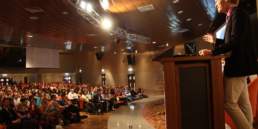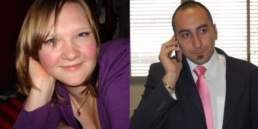What has AEGEE achieved since it was founded in 1985? When it comes to discussions about the past of our association, sooner or later this question is asked. What was AEGEE’s impact then and now? It is a fact that AEGEE had a huge impact in its first years, the late 80ies. Some external and internal factors helped a lot. When AEGEE was founded, the European integration process was not rooted in the society and therefore also on hold on political level. The idea of an integrated Europe was not sexy in 1985. Therefore many European-minded politicians were more than happy when AEGEE was created, because suddenly European integration got a face.

Many oldies tell the stories about huge financial support for their conferences from national governments and Brussels, about rented limousines for the duration of the events. It was a trade-off from which both sides benefitted: the small AEGEE received great support, the invited politicians enjoyed to meet the young Europeans and to be seen with them. One example: Dutch Prime Minister Ruud Lubbers, who attended the Agora in Leiden in 1987. Or former French President Francois Mitterand, who invited AEGEE over to the legendary meeting at the Elysee palace in 1987, where AEGEE convinced him to fund and support the Erasmus Programme, which was about to be founded.
And here we come back to the impact question: AEGEE met all the big names, but did they really listen? Did AEGEE change something? It is hard to say for most cases. The legend goes that AEGEE made the Erasmus Programme possible. I spoke with some participants of the famous meeting. They don’t have the illusion that without AEGEE there would not have been Erasmus. However, they say that it might have come a few months later. This would be in fact an impact and supports the theory that AEGEE was heard. The association was indeed well connected, with the French elite universities at its heart. Many antennae had great contacts with politicians, like AEGEE-Bonn. In their founding years, when the city was still the German capital, they had interviews with ministers or deputy-ministers in every issue of their magazines.
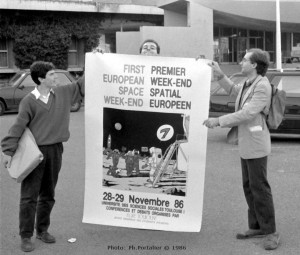
So what changed later, in the 90ies? The answer: Europe and AEGEE’s structure. In 1985, there were only few internationally active students’ associations. BEST was founded in 1987, ESN in 1989. So the times were good for European-thinking students associations and AEGEE had a head-start. But the others were catching up. Moreover, when AEGEE expanded to the East in 1990, the association gave up its influence in the EU. In a time, when the EU politicians focused on the creation of the single market and new decision-making structures, which needed a lot of small steps, AEGEE went ahead too fast and too far for the EU bureaucracy and politicians.
AEGEE clearly underestimated this. The influence and impact of the association would have clearly stayed a lot bigger if AEGEE had stayed within the EU borders – that’s one of the main reasons behind Franck Biancheri’s polarizing idea to split AEGEE into a Western and Eastern part, which he presented at Agora Enschede in May 2012. However, AEGEE clearly decided to value a true integration higher than a kingpin role in European Youth policy matters. The price the association paid was its influence.
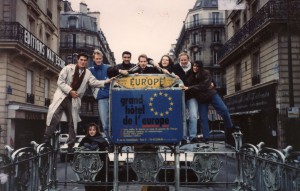
Since AEGEE was growing, there was no way back. This is the mentioned internal factor. AEGEE was a real grassroots organization. The CD spent its efforts on network administration and other internal matters. Even the external projects which could have had an external impact fell short of its possibilities, because the efforts did not go into the direction of getting screen time and creating press releases for politicians. Instead the focus was to create nice projects for its members. Only very few projects were promoted outside of AEGEE.
Moving the headoffice to Brussels in 1996 was supposed to change that, but even then the focus was on network matters. While other associations had a clear focus on external representation, AEGEE used the common headoffice to improve the service for its members. Only in the past couple of years AEGEE increased its focus on its external role, while keeping up its great internal administration. Even the recently discussed ideas of a Network-based CD and a small core team in Brussels – if implemented – would have to prove that they can make a change.
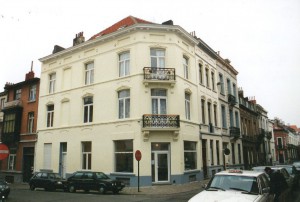
But is it really bad that AEGEE did not use its potential for external impact? Not necessarily. AEGEE is a great supermarket for its regular customers. I find it very amusing and sad at the same time to see small binational integration initiatives on TV, where the students representatives shake hand with politicians. Because I know that AEGEE does so much more and often in an unnoticed way. It would be great to keep up these initiatives – such as in the Eastern Partnership project – and to promote them better outside of AEGEE, to get media attention, political attention and also non-AEGEE participants. This can often be done with better project design and steering – which is often totally neglected. Often the best organisers take care of the parties…
Increasing the impact in politics is much harder, since there are much more players in the field. AEGEE is represented in different bodies and does a good job. But also here there is a chance to achieve more, because despite the fact that the European integration is much stronger today than in 1985, there is a huge acceptance crisis in the population again. Many people are fed up with Europe, populist politicians are on the rise, it’s North against South in Europe. Also many AEGEE members are caught by the negative feelings that are created.
AEGEE is needed more than ever – by offering its service to the politicians that see that see the need of arguments over sentiments. AEGEE can provide it better than any other association – it can have a true impact. Like in 1985. So let’s do it.
Related Posts
1st August 2019
The Gallery of All Presidents of AEGEE-Europe
Here is the gallery of all Presidents of AEGEE-Europe - with photos of every one of them. Enjoy the list!

